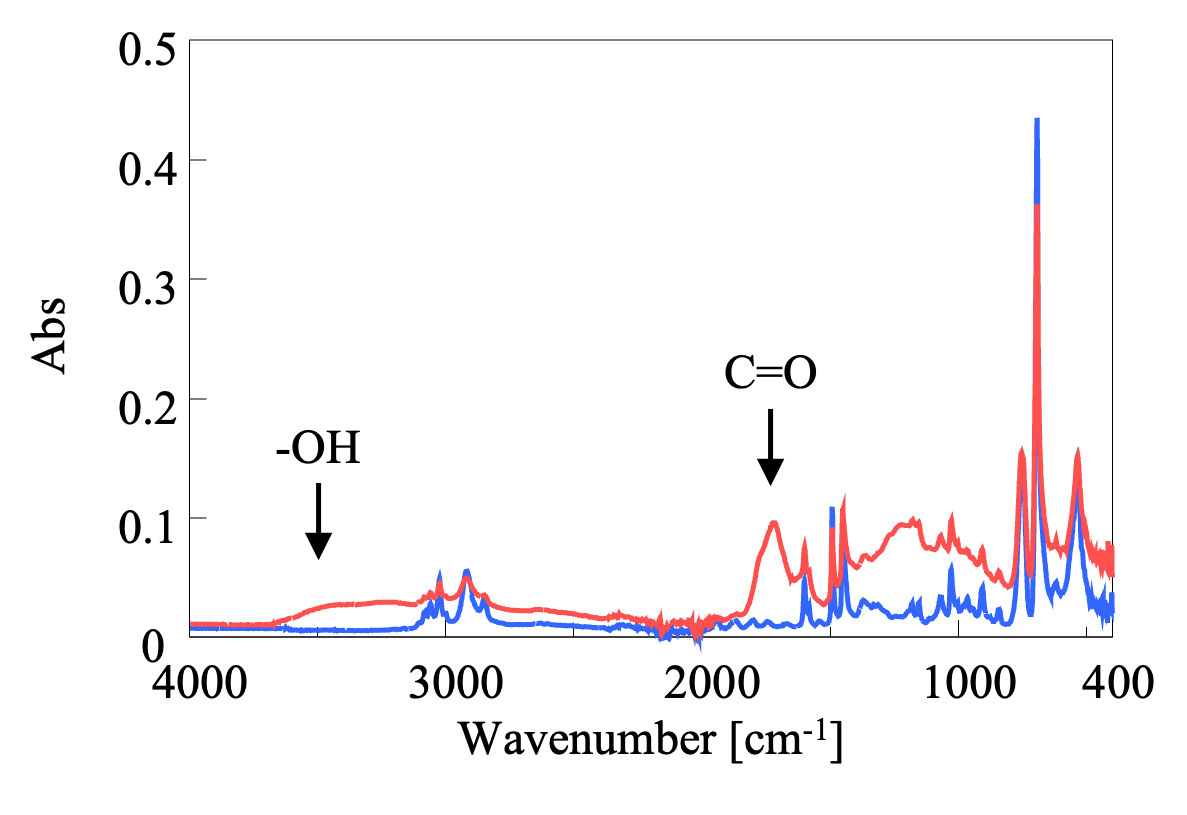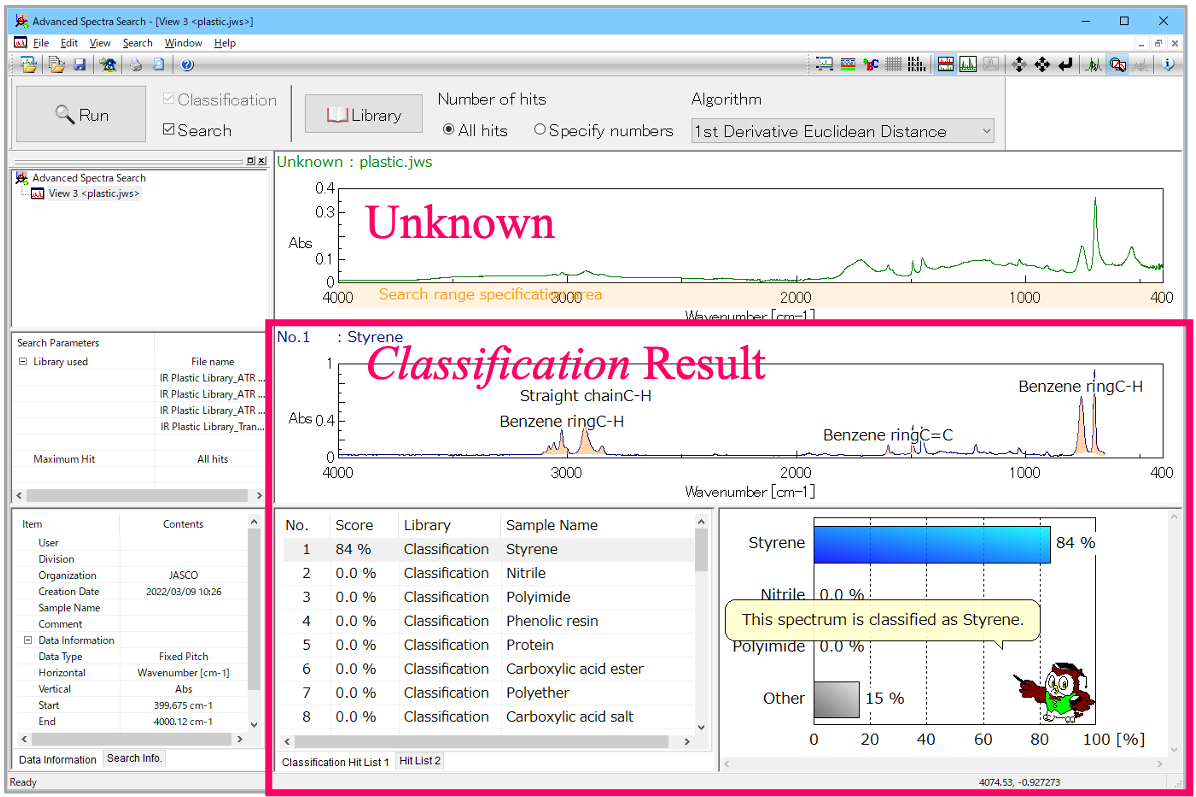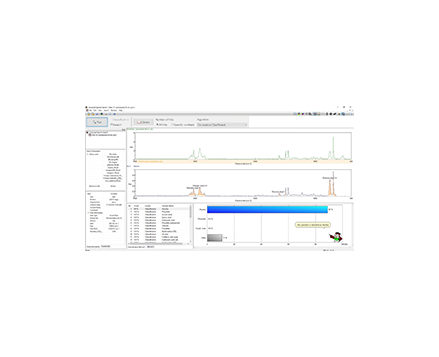Identification of Degraded Plastics by FTIR Spectroscopy: Machine-Learning Classification and Library Search for Detecting Degraded Plastics Using IR Spectral Verification
March 13, 2024Introduction
The shape of the infrared (IR) spectra of plastics depends on the degree of degradation (Figure 1). For example, oxidative degradation generates absorption bands attributed to -OH and C=O stretching vibrations. If an attempt to identify such spectra is made using a general database based only on the degree of agreement of the spectral shape, it may provide erroneous qualitative results. Multiple factors, such as ultraviolet (UV) radiation, heat, moisture, and mechanical stress can affect the degradation of plastics; therefore, it is not practical to create a database that covers all these factors in a combined analysis, as it would require a substantial effort.
Key IR absorption bands associated with plastics remain intact, even in instances of plastic degradation. 1) JASCO recommends two different approaches 2) to identify degraded plastics: Classification based on key absorption bands and Search based on spectral library comparison.
*1): This is based on the idea that if the molecular structure has been destroyed so that the material can be no longer be called a plastic, the key absorption bands associated with the original plastic will not be detected.
*2): The ADSS-4X Advanced Spectral Search program performs both Classification and Search for sample spectra.

Sample spectra can be analyzed by Classification in the Advanced Spectral Search program based on the key absorption bands associated with plastics. Classification is based on machine-learning results for approximately 10,000 spectra and classifies sample spectra into 35 categories using key absorption bands exhibited by common plastic components, such as hydrocarbons, styrenes, and polyesters. Key absorption bands associated with the molecular bonding for a substance are displayed in the spectrum of the Classification results, allowing for visual spectral determination.
To further verify the Classification results, Search narrows down the type of plastic using the LIB-PLA-ADSS IR plastics library, which contains 153 spectra grouped into 39 categories.
This application note presents the results of a qualitative analysis of degraded polystyrene (PS) using a combination of Classification and an IR plastics library Search in the Advanced Spectral Search program.
Keywords
Microplastics, Degraded plastics, Machine-learning, Advanced Spectral Search, IR plastics library
Results

Figure 2 shows the Classification results for the spectrum of a degraded polystyrene (PS) sample. The scores and key absorption bands in the spectrum indicate that the sample is likely to be a styrene. If the sample is a microplastic, it can be assumed the sample is polystyrene (including polystyrene foam).
To further validate the Classification results, a spectral Search was performed. Styrofoam and polystyrene were the top two ranking spectral matches in the Search results (Figure 3). By cross-checking the results using the Classification and Search results, the sample was identified as polystyrene.

The same analysis method was attempted for the spectra of 11 other types of degraded plastics, including polyethylene (PE) and polypropylene (PP), and correct results were again obtained. The validation results also showed that “Euclidean distance after differentiation” is the best search method.3)
*3 Depending on the degree of plastics degradation, it may be necessary to select another search method.
Conclusion
The above Classification and Search results for qualitative analysis of degraded plastics whose spectral shape has changed indicate the effectiveness of the Advanced Spectral Search program Classification and Search functions.
Required Products and Software
System Configuration
| Part Number | Model | Description |
| 4880-J117A | ADSS-4X | Advanced Spectra Search Program |
| 4880-J142A | LIB-PLA-ADSS | IR Plastics Library, ADSS-4X is required |
References
Applicative Solution Lab Division E. Taira
Related Products
-
FT/IR-4X
-

The Advanced Spectra Search (ADSS) program aids in the analysis of spectra for unknown samples. The program uses two functions to
Advanced Spectra Search (ADSS)

Identification of Degraded Plastics by FTIR Spectroscopy: Machine-Learning Classification and Library Search for Detecting Degraded Plastics Using IR Spectral Verification
Introduction
The shape of the infrared (IR) spectra of plastics depends on the degree of degradation (Figure 1). For example, oxidative degradation generates absorption bands attributed to -OH and C=O stretching vibrations. If an attempt to identify such spectra is made using a general database based only on the degree of agreement of the spectral shape, it may provide erroneous qualitative results. Multiple factors, such as ultraviolet (UV) radiation, heat, moisture, and mechanical stress can affect the degradation of plastics; therefore, it is not practical to create a database that covers all these factors in a combined analysis, as it would require a substantial effort.
Key IR absorption bands associated with plastics remain intact, even in instances of plastic degradation. 1) JASCO recommends two different approaches 2) to identify degraded plastics: Classification based on key absorption bands and Search based on spectral library comparison.
*1): This is based on the idea that if the molecular structure has been destroyed so that the material can be no longer be called a plastic, the key absorption bands associated with the original plastic will not be detected.
*2): The ADSS-4X Advanced Spectral Search program performs both Classification and Search for sample spectra.

Sample spectra can be analyzed by Classification in the Advanced Spectral Search program based on the key absorption bands associated with plastics. Classification is based on machine-learning results for approximately 10,000 spectra and classifies sample spectra into 35 categories using key absorption bands exhibited by common plastic components, such as hydrocarbons, styrenes, and polyesters. Key absorption bands associated with the molecular bonding for a substance are displayed in the spectrum of the Classification results, allowing for visual spectral determination.
To further verify the Classification results, Search narrows down the type of plastic using the LIB-PLA-ADSS IR plastics library, which contains 153 spectra grouped into 39 categories.
This application note presents the results of a qualitative analysis of degraded polystyrene (PS) using a combination of Classification and an IR plastics library Search in the Advanced Spectral Search program.
Results

Figure 2 shows the Classification results for the spectrum of a degraded polystyrene (PS) sample. The scores and key absorption bands in the spectrum indicate that the sample is likely to be a styrene. If the sample is a microplastic, it can be assumed the sample is polystyrene (including polystyrene foam).
To further validate the Classification results, a spectral Search was performed. Styrofoam and polystyrene were the top two ranking spectral matches in the Search results (Figure 3). By cross-checking the results using the Classification and Search results, the sample was identified as polystyrene.

The same analysis method was attempted for the spectra of 11 other types of degraded plastics, including polyethylene (PE) and polypropylene (PP), and correct results were again obtained. The validation results also showed that “Euclidean distance after differentiation” is the best search method.3)
*3 Depending on the degree of plastics degradation, it may be necessary to select another search method.
Conclusion
The above Classification and Search results for qualitative analysis of degraded plastics whose spectral shape has changed indicate the effectiveness of the Advanced Spectral Search program Classification and Search functions.
Keywords
Microplastics, Degraded plastics, Machine-learning, Advanced Spectral Search, IR plastics library
Required Products and Software
System Configuration
| Part Number | Model | Description |
| 4880-J117A | ADSS-4X | Advanced Spectra Search Program |
| 4880-J142A | LIB-PLA-ADSS | IR Plastics Library, ADSS-4X is required |
References
Applicative Solution Lab Division E. Taira

 Download This Application
Download This Application